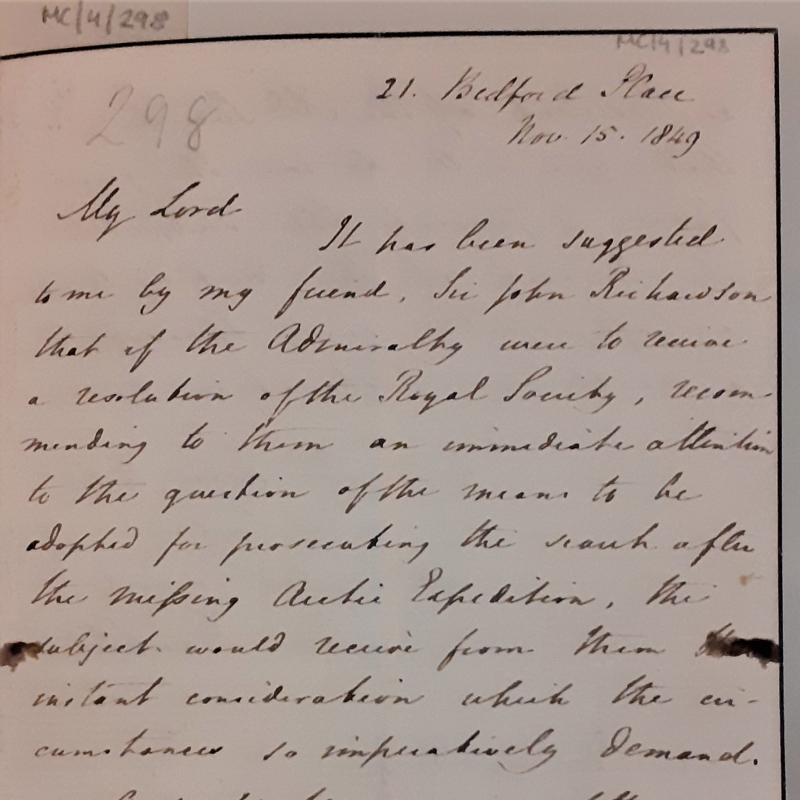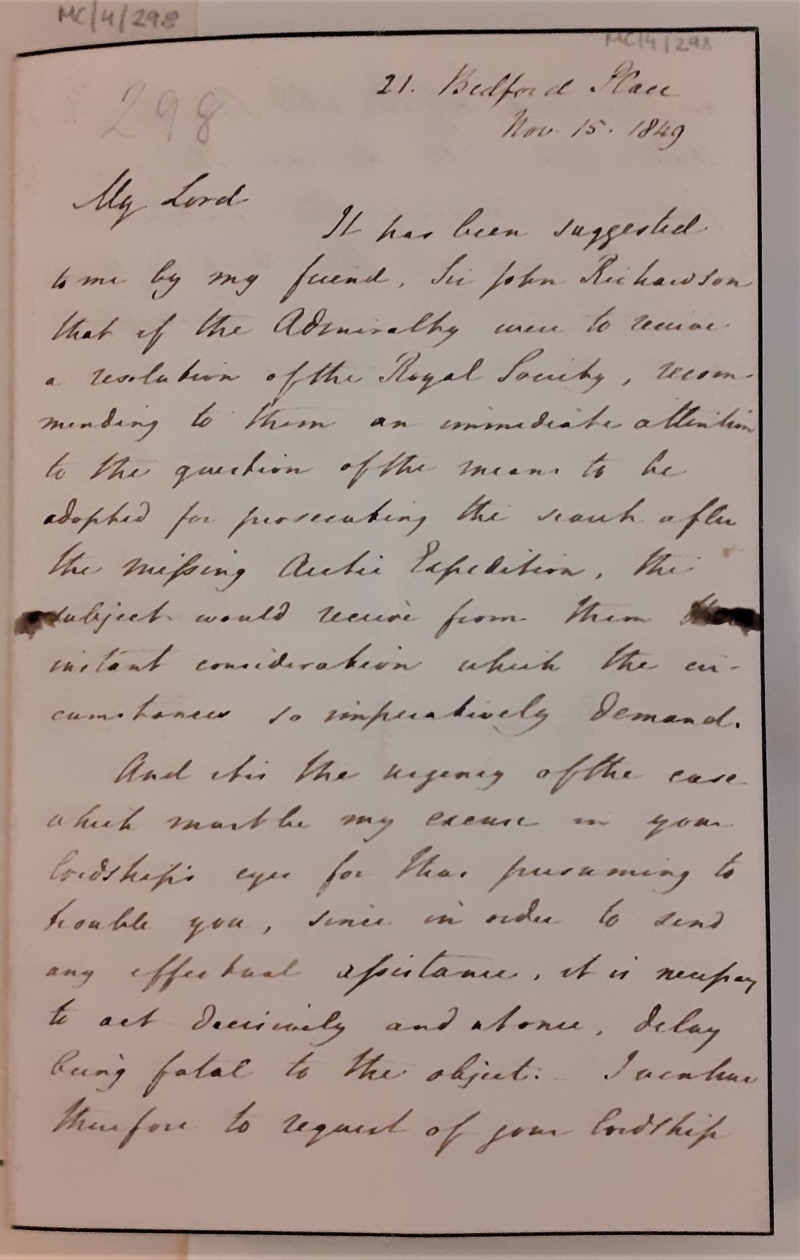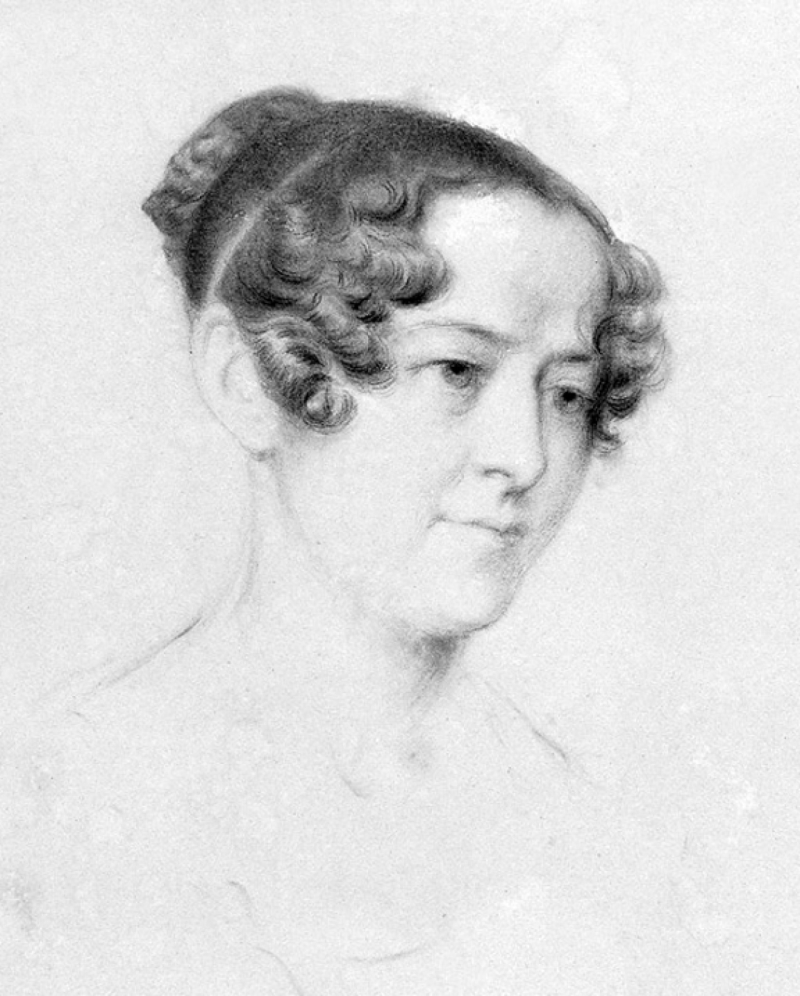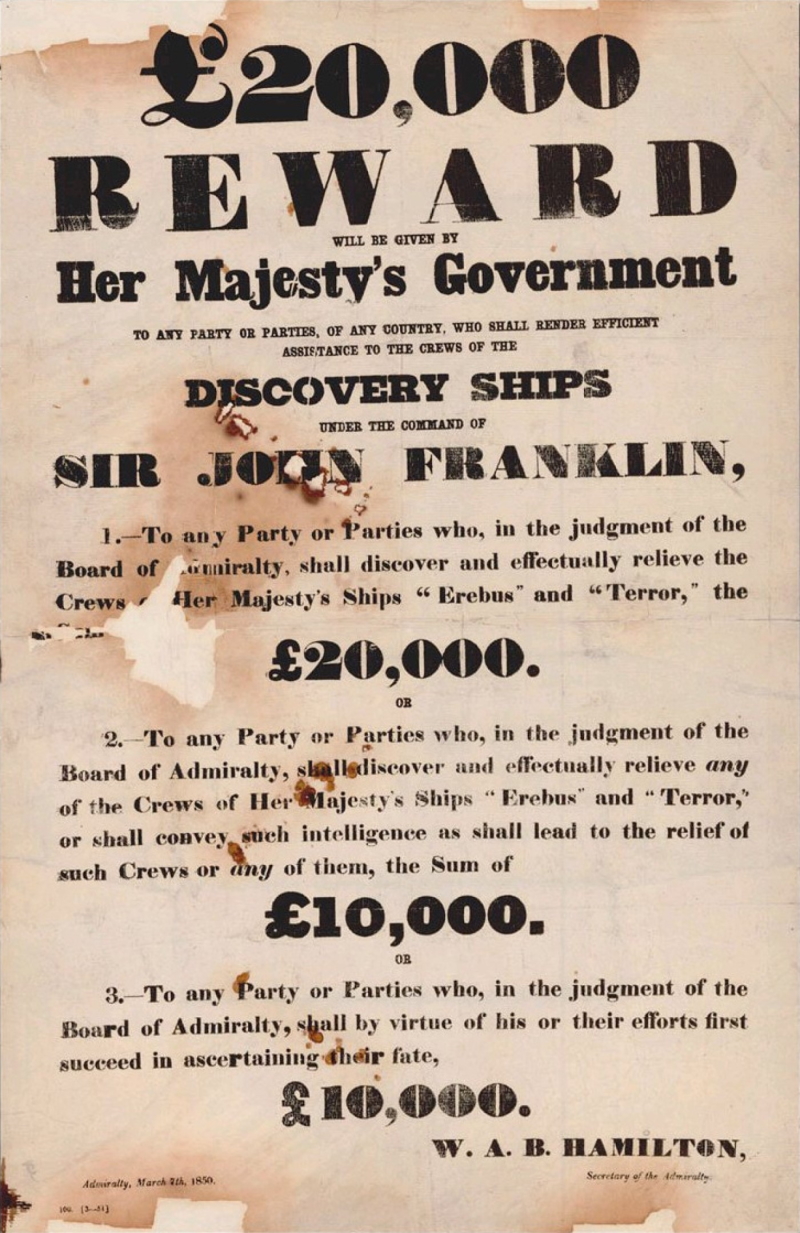An item in the Royal Society's Miscellaneous Correspondence series is part of a decade-long effort to trace a lost Arctic expedition, as Isabel Lauterjung explains.

Since joining the Royal Society last October, I’ve catalogued around 1,800 letters of our Miscellaneous Correspondence series. This consists of 17 bound volumes and an additional 25 boxes of incoming letters, written between 1832 and 1925 to the Society’s officers (Presidents, Secretaries and Treasurers) by a wide variety of people.
Correspondents included Fellows of the Royal Society, ‘amateur’ scientists valiantly trying to solve millennia-old problems, or even Prince Albert himself. Reading and cataloguing these letters can be entertaining if the writing style is particularly, er, unexpected but it can also be a sobering and somewhat moving reminder of the historical context in which they were written.
 From MC/4/298, ‘Letter from Jane Franklin, 21 Bedford Place, to the Earl of Rosse’
From MC/4/298, ‘Letter from Jane Franklin, 21 Bedford Place, to the Earl of Rosse’
‘It is the urgency of the case which must be my excuse […] for thus presuming to trouble you, since in order to send any effectual assistance, it is necessary to act decisively and at once, delay being fatal to the object.’
These words were addressed to the Earl of Rosse, President of the Royal Society, in November 1849. They were written on black-bordered paper by Lady Jane Franklin, who had not heard from her husband, Arctic explorer Sir John Franklin, in over four years. Sir John, elected a Fellow of the Royal Society in 1822 and with multiple expeditions under his belt, had set out in May 1845 with two ships, HMS Erebus and HMS Terror, in search of the fabled Northwest Passage. They were last seen on 26 July 1845 by two whalers near Lancaster Sound.
 Portrait of Lady Jane Franklin, Sir John Franklin's wife (Public Domain)
Portrait of Lady Jane Franklin, Sir John Franklin's wife (Public Domain)
The first half of the nineteenth century was an exciting time of polar exploration and new scientific discoveries, and these journeys could also inform political claims to sea routes or territories. The idea of a Northwest Passage has existed from the first sea voyages to the American continent by European explorers. Even in our collections, the first mention of it can be found as early as 1665 in a letter written by Royal Society Secretary Henry Oldenburg to Robert Boyle.
In the early nineteenth century, the Royal Society through its close relationship to the Admiralty and the Royal Navy influenced multiple journeys to the area, and Franklin’s earlier expeditions succeeded in mapping much of the Arctic coastline. His final voyage, organised by Sir John Barrow, was intended to solve the question of the Northwest Passage once and for all, although during its proposal stage for securing funding, the scientific benefits – the potential of new meteorological and magnetic observations and knowledge on natural history – were also emphasised.
Lady Franklin’s letter was written over four years after the two ships of the Franklin expedition were lost, and offers an insight into the beginning of her decade-long efforts to find out what happened to her husband. This determination ultimately led her to become an expert in Arctic geography despite never having set foot in the region. The Admiralty had organised a three-pronged rescue effort in 1848, consisting of two further sea expeditions led by Henry Kellett and Sir James Clark Ross and an overland rescue party led in part by Sir John Richardson, and they also offered a reward to anybody with further information to assist the search.
 Notice offering a reward for information on the missing expedition (Public Domain)
Notice offering a reward for information on the missing expedition (Public Domain)
The Ross and Richardson expeditions returned in November 1849, documented again in our MC series, in which the Admiralty informed the President of the Royal Society that ‘the Lords are not prepared to peril more lives for the Investigation of the North West passage’.
However, in early 1850, another search expedition set off. This was led by Sir John Ross, who had volunteered 'in the most disinterested manner' and without much enthusiasm, according to letter MC/4/333 in our collections and my background reading for this piece, Andrew Lambert’s biography of Franklin. Ross had reportedly promised his wife that he was finished with polar exploration and had also developed health problems, which meant he was less inclined to go. Ultimately, he returned after only one winter, much to the dismay of Lady Franklin and the Admiralty.
More search attempts, funded privately or by non-Admiralty parties, followed in the years to come. In 1854, John Rae, in the service of the Hudson's Bay Company, met Inuit people who showed him objects identified as having belonged to Franklin’s crew and who testified that some of the remaining crew members, after the ships had been abandoned, had resorted to cannibalism. Although Rae is credited with discovering the fate of the expedition, his report - in particular the less ‘heroic-sounding’ aspects of it - was discredited by Lady Franklin, with the help of none other than Charles Dickens.
Lady Franklin’s desperation for further search parties, as evidenced by her 1849 letter, did not stop here: after failing to obtain more government funding, she personally commissioned an expedition under Francis Leopold McClintock in the steam yacht Fox. One of the key outcomes of this journey was written confirmation of the original crew’s fate and Franklin’s death. McClintock’s search also went on to produce new observations in astronomy, meteorology, and geology, communicated as a report to the Royal Society.
The Miscellaneous Correspondence collection is a fantastic resource to dip into such historical events through individuals’ perspectives. Through Lady Jane Franklin’s letter, I’ve been able to dig deeper into the involvement of the Royal Society in the search for the lost Franklin expedition, and the Society’s relationship with the Admiralty. It was just last week that I came across McClintock’s report to the Society – written a decade after the fact – so do keep your eyes peeled for further additions to the online Miscellaneous Correspondence records. There are always new sagas being catalogued!







